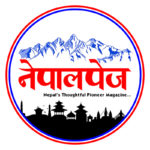Kathmandu : The World Day Against Trafficking in Persons is being marked today by organizing several programmes in Nepal. The international day is spectacular to raise awareness towards eliminating human trafficking and call on governments, law enforcement agencies and stakeholders to enhance their commitment to that end.
The day is being observed this year with the theme ‘Reach every victim of trafficking, leave no one behind’. In the context of trafficking in persons, leaving people behind means failing to end the exploitation of trafficking victims, failing to support victim-survivors once they are free from their traffickers, and leaving identifiable groups vulnerable to traffickers. Trafficking in persons is a serious crime and a grave violation of human rights.
Every year, thousands of men, women and children fall into the hands of traffickers, in their own countries and abroad. Almost every country in the world is affected by trafficking, whether as a country of origin, transit or destination for victims. The Protocol to Prevent, Suppress and Punish Trafficking in Persons defines Trafficking in Persons as the recruitment, transportation, transfer, harbouring or receipt of persons, by means of the threat or use of force or other forms of coercion, of abduction, of fraud, of deception, of the abuse of power or of a position of vulnerability or of the giving or receiving of payments or benefits to achieve the consent of a person having control over another person, for the purpose of exploitation. Exploitation shall include, at a minimum, the exploitation of the prostitution of others or other forms of sexual exploitation, forced labour or services, slavery or practices similar to slavery, servitude or the removal of organs, the UN noted.
The World Day against Trafficking in Persons was proclaimed by the United Nations General Assembly, in its resolution A/RES/68\192. According to the United Nations, global crises, conflicts, and the climate emergency are escalating trafficking risks. Displacement and socio-economic inequalities are impacting millions of people worldwide, leaving them vulnerable to exploitation by traffickers. Those who lack legal status, live in poverty, have limited access to education, healthcare, or decent work, face discrimination, violence, or abuse, or come from marginalized communities are often the primary targets of traffickers. Globally, national responses, particularly in developing States, appear to be deteriorating, the UN agency stated. Detection rates fell by 11% in 2020 and convictions plummeted by 27%, illustrating a worldwide slowdown in the criminal justice response to trafficking.
The COVID-19 pandemic also changed the characteristics of trafficking, pushing it further underground and potentially increasing the dangers to victims by making the crime less likely to come to the attention of the authorities. In fact, 41% of victims who manage to escape their ordeal reach out to the authorities on their own initiative – another clear sign that anti-trafficking responses are falling short. According to the National Report, 2076 of the Ministry of Women, Children and Senior Citizen, lately women and children are being increasingly trafficked in different countries of Asia, Arab, Africa, Europe and America. With the expansion of human trafficking dimension, it has posed a serious challenge to prevent and control the crime associated to trafficking in persons. Stakeholders have laid emphasis on amending and framing the laws for the control of human trafficking.
“Nepal’s existing law is not adequate and practical to prevent and check human trafficking in persons, socialist Meena Poudel said, adding, “Its dimension has been expanded. Now men are also becoming vulnerable to the trafficking”




COMMENTS